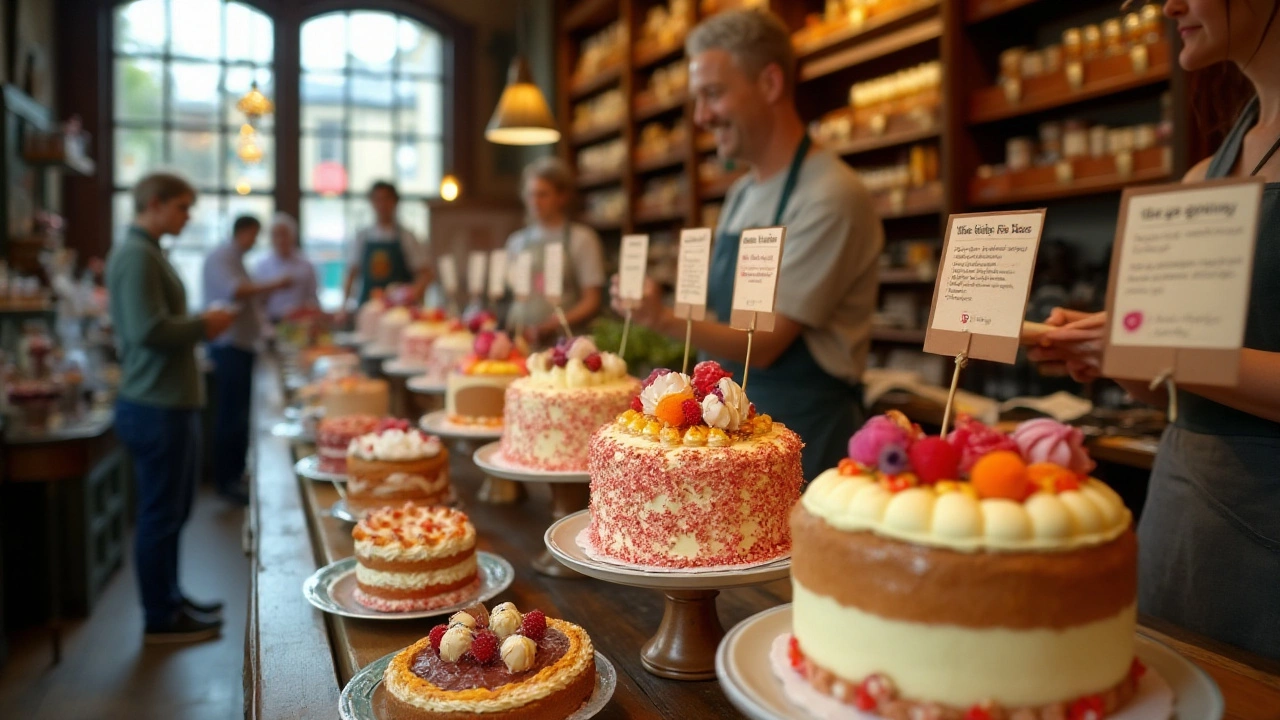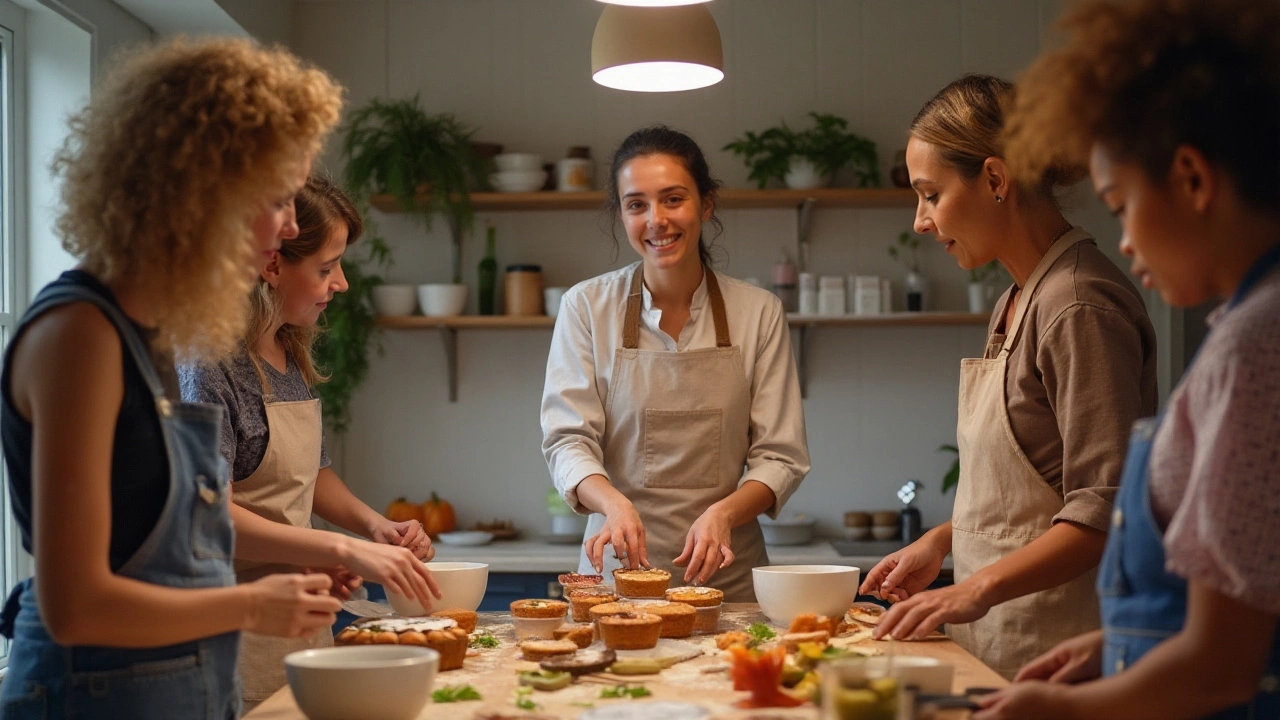Many of us cherish the comforting sweetness of cakes, but for those experiencing discomfort from gluten, indulging can feel like an impossible dream. 'Gluten belly' isn’t just a buzzword—it's a reality for many navigating the challenges of such a diet.
Luckily, enjoying cakes without the glutens is not only possible but easy with a little guidance. Far from limiting your options, gluten-free baking opens up a world of flavors waiting to be explored.
This article will delve into understanding what gluten belly is, guide you through mindful ingredient choices, and offer practical baking tips. Plus, we'll touch on some lifestyle adjustments necessary for feeling better and staying healthy. Let's start this journey to a happier, gluten-free world of sweetness.
- Understanding Gluten Belly
- Ingredients to Avoid and Embrace
- Baking Tips for Tasty Gluten-Free Cakes
- Lifestyle Changes for Lasting Impact
Understanding Gluten Belly
Experiencing a 'gluten belly' goes beyond just feeling a bit bloated after a hearty meal. It often involves a range of digestive discomforts that vary from mild to severe, affecting many people today. Living with gluten intolerance can be quite a challenge, as these symptoms may include bloating, abdominal pain, and even headaches, particularly following the consumption of grains containing gluten. Delving underneath the surface, gluten is a protein found in wheat, barley, and rye, acting as a glue of sorts, holding foods together and maintaining their shape.
To comprehend gluten belly fully, it's important to understand the reactions occurring at a cellular level. When someone with a gluten intolerance or sensitivity consumes gluten, their body reacts defensively, often mistakenly, treating gluten as a harmful invader. This causes an array of adverse symptoms ranging from digestive issues to skin problems. It's fascinating that while some of these symptoms are visibly apparent, others might manifest in more obscure ways, making it difficult for some individuals to connect them directly to gluten intake.
For some, such as those diagnosed with celiac disease, the situation is more intense. Celiac disease is an autoimmune disorder where consuming gluten leads to damage in the small intestine. This damage can interfere with nutrient absorption, leading to additional complications. Studies indicate celiac disease affects roughly 1% of the global population, although many remain undiagnosed, living with discomfort without understanding why. Contrary to popular belief, gluten sensitivity is not limited to celiacs. Many without the disease still experience negative reactions when consuming gluten.
According to Dr. Alessio Fasano, Director of the Center for Celiac Research, "The spectrum of gluten-related disorders is wide and varied, and understanding your body's response is crucial for managing gluten belly effectively."
Recognizing gluten belly symptoms can often be complex, requiring careful observation and sometimes professional consultation. That said, interestingly, some people might only show minimal symptoms yet still suffer internally. With the increasing awareness and research, individuals are making more informed dietary decisions, turning to options like gluten-free cakes and other foods designed to cater to their unique needs. The journey towards understanding gluten belly is not only significant for personal health but also for paving pathways for inclusive food options covered by the umbrella of gluten-free living.

Ingredients to Avoid and Embrace
When starting out on a gluten-free journey, it can feel like there's an extensive list of things to avoid, leaving some feeling overwhelmed. By knowing exactly which ingredients to skip and which to welcome, you can embrace a lifestyle enriched by variety and taste. First off, gluten is a protein found in wheat, barley, and rye, so it's paramount to steer clear of anything containing these grains. Traditional wheat flour, a staple in many kitchens, is obviously on the 'avoid' list, along with cereals, pastas, and even certain sauces that can contain hidden gluten. Interestingly, soy sauce, often assumed to be safe, is another sneaky culprit; it typically includes wheat unless specifically labeled as gluten-free.
Now, onto the fun part—what you can embrace! Gluten-free baking should never feel restrictive. Instead of traditional flour, reach for options like almond flour, coconut flour, or rice flour, each adding its unique taste and texture to your gluten-free cakes. Almond flour is naturally sweet and moist, perfect for a dense cake, while rice flour offers a more neutral base. Tapioca, potato starch, and cornstarch can act as binders and provide that chewy texture many seek in baked goods. Consider experimenting with xanthan gum or guar gum as they help mimic the elasticity usually provided by gluten. A quick tip: mixing several different gluten-free flours often leads to the best texture and rise in cakes.
According to the Celiac Disease Foundation, understanding ingredient labels is vital as it helps individuals avoid gluten effectively while still enjoying diverse food. Being educated about gluten-free certifications can empower you in the supermarket aisles.
Another handy batch of ingredients to embrace includes naturally gluten-free products such as fruits, vegetables, and dairy. These not only enhance the nutritional value of your diet but also provide fresh flavors to your sweets. Think about adding grated zucchini or carrots for moisture or using mashed bananas and applesauce as natural sweeteners. With these alternatives, not only does your dessert avoid gluten, but it also gets a delightful twist that’s impossible to resist. And let’s not forget about nuts and seeds—sunflower seeds, walnuts, and chia seeds can be great additions, sprinkled on top for crunch or inside for texture.
Creating delicious gluten-free treats necessitates understanding and foresight into both the limitations and possibilities available to you. What may begin as a daunting task can suddenly unfold into an exciting culinary exploration where your taste buds—and your belly—reap the benefits. After all, adopting a gluten-free lifestyle hardly means letting go of joy in baking; rather, it opens doors to new and enriching kitchen adventures, where every bite is as fulfilling as it is safe. Embracing the right ingredients while avoiding gluten makes this not only possible but wonderfully rewarding.

Baking Tips for Tasty Gluten-Free Cakes
Baking gluten-free cakes requires some adjustments, but it doesn't mean you need to compromise on flavor or texture. One of the first things to understand is that gluten provides structure in traditional baking. Its absence means relying on alternative ingredients to achieve the same delightful results. This often involves using a combination of gluten-free flours, such as almond flour, coconut flour, or rice flour, each offering unique benefits and flavors. Experimenting with these flours can help you find the best texture for your cakes, whether you prefer a denser bite or a lighter crumb.
It's also crucial to include a binding agent in your recipes. Gluten is naturally sticky, and without it, cakes can crumble easily. Commonly used binders in gluten-free baking include xanthan gum, guar gum, and even chia seeds soaked in water. These alternatives help hold your cake together, mimicking the elasticity that gluten provides. Xanthan gum is particularly handy for cakes, as it provides a smooth texture without affecting the flavor. Just remember, a little goes a long way; start with about a teaspoon per cup of flour.
Gluten-free cakes can dry out more quickly than their gluten-filled counterparts due to the different properties of gluten-free flours. To combat this, consider adding moist ingredients like applesauce, mashed bananas, or yogurt to your batter. These not only keep the cake moist but also add a delightful depth of flavor. You could also try honey or agave syrup as natural sweeteners that also bring moisture. Balancing sweetness with spices such as cinnamon or cocoa can create a complex flavor profile that enhances the taste without overpowering it.
When it comes to baking techniques, make sure to thoroughly mix your ingredients, as some gluten-free flours can clump or not distribute evenly. Using an electric mixer can help achieve a consistent batter. Mixing also incorporates air, which lightens up the cake. However, avoid over-mixing, as this can lead to a dense cake. It’s a fine balance but one that becomes easier with practice. Consider using parchment paper to line your baking pans. It prevents the cake from sticking and helps in easy removal, keeping the structure intact.
"Gluten-free baking is less about replication and more about transformation," says Deborah Madison, a pioneer in gluten-free baking. By considering the different ingredients and their individual qualities, you can transform your recipes into something everyone can enjoy.
To ensure the best rise for your gluten-free cakes, preheat your oven fully before baking. Gluten-free cakes often need a slightly higher temperature or a longer baking time to set properly. Always test with a toothpick; if it comes out clean, your cake is ready. Allow the cake to cool completely in the pan before transferring it, as gluten-free cakes are often more fragile when warm. These small steps can significantly enhance the texture and appearance of your cake, making every slice a treat.

Lifestyle Changes for Lasting Impact
Embracing a gluten-free lifestyle often goes beyond just altering what’s on your plate. It involves a deeper awareness of how gluten interacts with your body and exploring new ways to incorporate balance and wellness into your daily routine. Understanding and addressing the reasons behind the discomfort known as 'gluten belly' can lead to transformative outcomes both mentally and physically, and this can be achieved without feeling deprived or restricted.
A crucial aspect of making lasting changes is developing a sustainable meal plan that respects your body's unique needs. This could mean getting acquainted with supermarkets that offer a wide array of gluten-free options, or perhaps taking it a step further by exploring farmer’s markets and experimenting with fresh and local produce. For those who love to bake, learning to navigate and enjoy the diverse selection of gluten-free cakes is both a satisfying and rewarding journey. It's about replacing 'can't have' with 'look at these other delicious choices.'
Additionally, understanding your nutritional intake is key. Gluten-free diets can sometimes lack certain nutrients, like fiber and B vitamins, which are often found in whole grains. Consequently, integrating foods rich in these nutrients such as quinoa, beans, lentils, and nuts into your diet can be beneficial. This approach ensures you’re not just cutting things out, but rather supplementing your meals with quality foods five or seven times a week. This might feel like hard work at first, but the payoff in health benefits and energy levels is undeniably worth it.
Physical activity and stress management also play a role in maintaining a healthy lifestyle while dealing with gluten issues. Engaging in regular exercise, whether it be through yoga, running, or even daily brisk walks, helps in digestion and boosts your mood, reducing stress levels that could exacerbate digestive discomfort. Incorporating mindfulness techniques, such as meditation or breathing exercises, can improve gut health, as stress is often directly linked to gut disturbances.
Mainstream awareness about gluten and its effects has risen significantly in recent years. According to the Celiac Disease Foundation, around 1 in 100 people worldwide are affected by celiac disease, with a substantial number unknowingly suffering from gluten sensitivity. These statistics of rising gluten awareness are a beacon of hope for many who might otherwise suffer in silence.
"Living gluten-free isn’t about restriction but about discovering a new way to nourish your body," remarks renowned dietitian Sarah Jones. Her words illuminate the transformative potential of adapting one's diet to personal needs, allowing both healing and indulgence to coexist harmoniously.
Finally, remember that making a lifestyle change isn’t about perfection—it's about progression. Listen to your body and adjust your habits as you learn what makes you feel vibrant and healthy. In summary, tackling gluten belly through effective lifestyle changes involves conscious food choices, comprehensive nutritional intake, regular physical activity, and a supportive mindfulness practice. These elements, combined, carve a path to not only overcoming discomfort but thriving in a gluten-free world.





